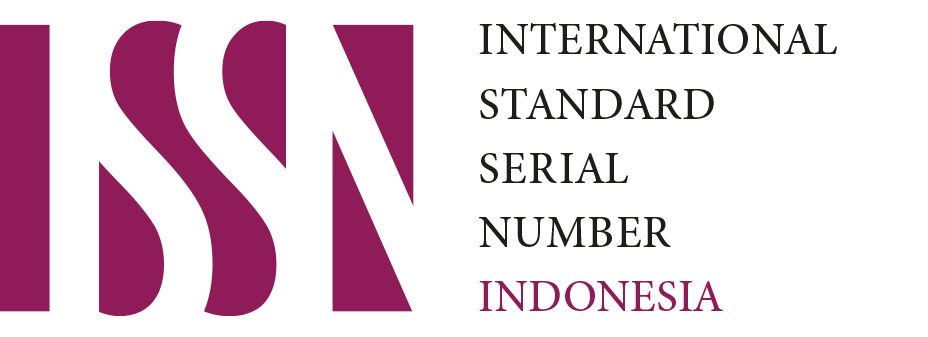Clustering of Librarians' Initial Knowledge on the Theme of Training
Downloads
Background of study: The implementation of librarian competency development through training in Sidenreng Rappang Regency, South Sulawesi Province, was carried out by dividing librarians based on the location of their agency's work area. In practice, there are training barriers, namely differences in absorption of the material due to limited training time and differences in initial knowledge of the training material.
Purpose: According to the librarian's prior knowledge of the training to be held in future, this study attempts to determine the best grouping and number of participants.
Method: The methodology used in this research is Cross Industry Standard Process for Data Mining (CRISP-DM) which consists of 6 stages. The data collection technique used a questionnaire with a linear numerical scale from a score of 0 to 10 to 97 librarians in Sidenreng Rappang Regency. Data were analyzed using the K-Means algorithm to determine the number of groups and the number of librarians in each group and evaluated using the Davies-Bouldin index (DBI) algorithm to determine the most optimal group division.
Findings: According to this study, the best number of groups for training in the processing of library materials is two under a DBI value of 0.68983. With a DBI value of 0.69431, the best number of groups is two in the library promotion training.
Conclusion: the library service training had the best number of groups of 2 with a DBI value of 0.65698. Meanwhile, for INLISLite-based automation training, the best number of groups is two groups with a DBI value of 0.65500.
Downloads
Brown, R. A., Wolski, M., & Richardson, J. (2015). Developing new skills for research support librarians. Australian Library Journal, 64(3), 224–234. https://doi.org/10.1080/00049670.2015.1041215
Chapman, P., Clinton, J., Kerber, R., Khabaza, T., Reinartz, T., Shearer, C., & Wirth, R. (2000). CRISP-DM 1.0: Step-by-step data mining guide. SPSS.
Cooke, N. A. (2012). Professional development 2.0 for librarians: Developing an online personal learning network (PLN). Library Hi Tech News, 29(3), 1–9. https://doi.org/10.1108/07419051211241840
Davis, R., & Saunders, L. (2020). Essential Skills for Corporate and Special Librarians. Journal of Library Administration, 60(7), 762–783. https://doi.org/10.1080/01930826.2020.1786984
Masruri, A., Kuntoro, S. A., & Arikunto, S. (2016). Pengembangan Kompetensi dan Pendidikan Berkelanjutan Pustakawan PTAIN: Studi Kasus di Perpustakaan UIN Sunan Kalijaga Yogyakarta. Jurnal Pembangunan Pendidikan: Fondasi dan Aplikasi, 4(1), 1. https://doi.org/10.21831/jppfa.v4i1.9818
Mughnyanti, M., Efendi, S., & Zarlis, M. (2020). Analysis of determining centroid clustering x-means algorithm with davies-bouldin index evaluation. IOP Conference Series: Materials Science and Engineering, 725(1), 012128. https://doi.org/10.1088/1757-899X/725/1/012128
Neigel, C. (2017). Professional Development for Library Workers: Exposing the Complicated Problems of Equity and Access. Partnership: The Canadian Journal of Library and Information Practice and Research, 11(2). https://doi.org/10.21083/partnership.v11i2.3795
Orme, V. (2008). You will be ...: A study of job advertisements to determine employers' requirements for LIS professionals in the UK in 2007. Library Review, 57(8), 619–633. https://doi.org/10.1108/00242530810899595
Raju, J. (2014). Knowledge and skills for the digital era academic library. The Journal of Academic Librarianship, 40(2), 163–170. https://doi.org/10.1016/j.acalib.2014.02.007
Rokach, L., & Maimon, O. (2005). Clustering Methods. In O. Maimon & L. Rokach (Eds.), Data Mining and Knowledge Discovery Handbook (pp. 321–352). Springer-Verlag. https://doi.org/10.1007/0-387-25465-X_15
Schröer, C., Kruse, F., & Gómez, J. M. (2021). A Systematic Literature Review on Applying CRISP-DM Process Model. Procedia Computer Science, 181, 526–534. https://doi.org/10.1016/j.procs.2021.01.199
Vergani, A. A., & Binaghi, E. (2018). A Soft Davies-Bouldin Separation Measure. 2018 IEEE International Conference on Fuzzy Systems (FUZZ-IEEE), 1–8. https://doi.org/10.1109/FUZZ-IEEE.2018.8491581
Wu, X., Kumar, V., Ross Quinlan, J., Ghosh, J., Yang, Q., Motoda, H., McLachlan, G. J., Ng, A., Liu, B., Yu, P. S., Zhou, Z.-H., Steinbach, M., Hand, D. J., & Steinberg, D. (2008). Top 10 algorithms in data mining. Knowledge and Information Systems, 14(1), 1–37. https://doi.org/10.1007/s10115-007-0114-2
Copyright (c) 2022 Faizhal Arif Santosa, Dedi Suprianto

This work is licensed under a Creative Commons Attribution-ShareAlike 4.0 International License.
Record and Library Journal by Unair is licensed under a Creative Commons Attribution-ShareAlike 4.0 International License.
1. The journal allows the author to hold the copyright of the article without restrictions.
2. The journal allows the author(s) to retain publishing rights without restrictions
3. The legal formal aspect of journal publication accessibility refers to Creative Commons Attribution Share-Alike (CC BY-SA).
4. The Creative Commons Attribution Share-Alike (CC BY-SA) license allows re-distribution and re-use of a licensed work on the conditions that the creator is appropriately credited and that any derivative work is made available under "the same, similar or a compatible license”. Other than the conditions mentioned above, the editorial board is not responsible for copyright violation.


 57201398420
57201398420

























